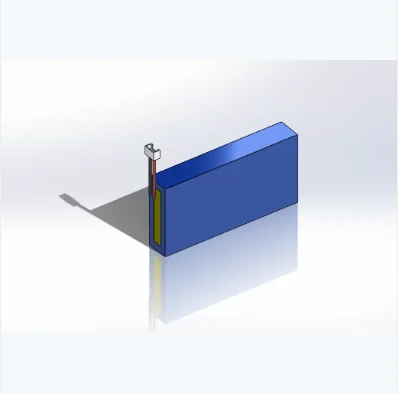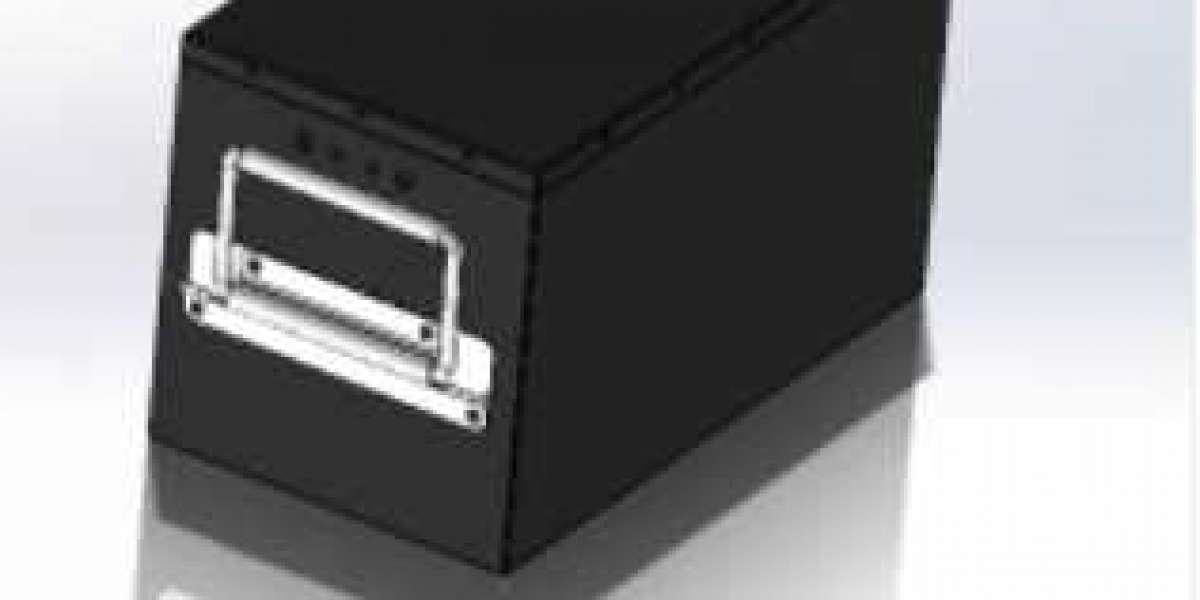Background introduction of the impact of fast charging on the positive electrode of lithium batteries
The application of lithium batteries has greatly improved people's way of life. However, with the rapid development of modern society, people have higher and higher requirements for the charging speed of lithium batteries, so the research on fast charging of lithium batteries is extremely important. This high-energy-density lithium battery fast charging technology will have broad application prospects in mobile electronic devices, high-power power tools, and electric vehicles. However, the current research on fast charging has been hindered by many obstacles, such as lithium precipitation on the negative side of lithium batteries.
In order to improve the fast charging performance of lithium batteries, we must fully understand the changes of electrode materials during the positive and negative processes, but the failure behavior of lithium battery cathodes under fast charging conditions has not been well understood in previous studies. Interested partners may wish to take a few minutes to explore this issue with Winshinepower.
Brief introduction of the effect of fast charging on the positive electrode of lithium battery
Recently, Dr. Tanvir R. Tanim (corresponding author) of Idaho National Laboratory published a research paper entitled "Extended Cycle Life Implications of Fast Charging for Lithium-Ion Battery Cathode" in the journal Energy Storage Materials. This article combines electrochemical analysis, failure model, and post-test characterization to study the effect of fast charging (XFC) on lithium battery cathode materials at a multi-scale. The experimental samples include 41 G/NMC (the anode is graphite, The positive electrode is NCM ternary material) soft-pack lithium battery, which can be cycled up to 1000 times at different fast charging rates (1–9 C) and charging states. It was found that in the early cycle process, the problem of the lithium battery cathode was small, but in the later period of the battery life, the cathode appeared obvious cracks and was accompanied by a fatigue mechanism, and the failure of the lithium battery cathode began to accelerate. In the process of cycling, the main structure of the lithium battery cathode remains intact, but it can be observed that the particles on the surface are significantly restructured.
Research highlights the impact of fast charging on the positive electrode of lithium batteries
1. Determine the main failure mode and mechanism of lithium battery cathode materials under XFC conditions
2. In the early cycle, the effect of the cathode material is small, but in the later cycle, the lithium battery cathode material accelerates failure
3. Under XFC conditions, the main mechanism of cathode decay is cracking; even when the cut-off voltage of lithium batteries is low, the reconstruction of the cathode surface and the lithium salt can be clearly observed.
4. Limiting the cut-off voltage of charging can minimize the main problems faced by the positive electrode of lithium batteries

Next, let's go into a detailed analysis of the impact of fast charging on the positive electrode of lithium batteries:
1) The cycle performance of the monolithic soft pack battery at different charge and discharge rates.
Mainly through the analysis of lithium battery charging efficiency and capacity attenuation, the difference in battery performance under different charging rates is explained. Studies have shown that high cycle rate and charge cut-off voltage have a significant impact on the charging efficiency of lithium batteries under different charge-discharge rates. Different charging and discharging protocols also have a significant impact on the performance degradation of lithium batteries.
2) Electrochemical characterization analysis of the failure model of lithium battery cathodes during fast charging.
The loss of lithium ions and the SEI impedance reflect the failure of the capacity of lithium batteries, and they generally show a linear increase trend with the cycling of the battery. But for the loss of active material, at a rate of 6C, it exhibits a rapid decay trend after 225 cycles and a rapid failure after 400 cycles. This change trend is roughly the same as that of RCT. Impedance performance, when the lithium battery is 600 cycles, the relationship between high rate and RCT is inverse (that is, the higher the rate, the smaller the resistance). In addition, in addition to RSEI and RCT, the article also analyzes the relationship between electrolyte liquid phase resistance and different charging rates. From the comprehensive analysis, it can be concluded that even at a high charge rate of 9 C, limiting the charge cut-off voltage can still reduce the loss of lithium ions and cathode active materials.
3) Analyze the failure mechanism of the lithium battery cathode.
From the SEM image of the lithium battery, it can be qualitatively analyzed that under different magnifications, most of the secondary particles of the positive electrode maintain the basic structure after cycling, and no pulverization occurs, but obvious cracks also occur. From the SEM analysis, it can be concluded that the cracking of such particles becomes more obvious with the progress of the cycle and the increase of the charge-discharge rate of the lithium battery.
At the same time, the cross-sectional structure of the electrode material was analyzed at a high rate of 9C when the cut-off voltage of the lithium battery was different. Through analysis, it is found that even at a very low cut-off voltage, although the lithium battery has a very low capacity loss and an increase in impedance, the cracking of the particles can still be observed in the positive electrode.
4) From the perspective of the dissolution of transition metal ions in lithium batteries, the impact of the positive electrode during the fast charging process is analyzed.
Transition metal ions in the positive electrode can migrate from the positive electrode to the negative electrode. The degree of increase of the three transition metal ions in the negative electrode of lithium batteries is different, but it is independent of the rate. The increase of transition metal ions with lithium battery cycling can also be attributed to increased cracking in the material. At the same time, the dissolution of metal ions also led to an increase in the SEI impedance of the anode.
5) The change of the atomic structure on the surface of the cathode particles of the lithium battery was analyzed by high-resolution TEM and EELS spectroscopy.
Through analysis, it is found that at lower magnification, the lithium battery cathode material still maintains the layered structure after the end of the cycle. In the high-resolution image, the surface of the particle is divided into three regions
(1) Layered structure area
(2) Mixed region of the layered structure and lithium salt
(3) The lithium salt region, and the thickness of the three regions is not uniform, and the thickness of the lithium salt region is only 3 nm. By observing the experimental results at different magnifications, it can be found that at high magnifications, the structural changes and reconstructions of the cathode surface of lithium batteries are more obvious, which also shows that the degradation of the cathode particle surface is not completely controlled by thermodynamics. In addition, the article also found that reducing the cut-off voltage of charging also reduced the remodeling of the material surface, but could not completely eliminate the lithium salt on the particle surface.
Summary of the impact of fast charging on the positive electrode of lithium batteries
This paper summarizes a mathematical model to better explain the phenomena in the experiments and the aging mechanism of the cathode with cycling, where the original data are derived from coin-cell lithium batteries.
The experimental data show a clear trend. There is an inflection point in the failure of the cathode. Before the inflection point, the capacity loss of the lithium battery cathode is basically linear with the number of cycles.
After the inflection point, the capacity of the positive electrode of the lithium battery decays rapidly. This fatigue mechanism can be explained by the site loss equation. The behavior after fatigue becomes more pronounced with increasing rate and is also related to the cut-off voltage for charging.
In addition, this paper introduces the parameter c2 related to battery failure and explores its relationship with charging rate and charging depth.
Through analysis, it can be found that even at a very low rate, a higher charging depth will lead to a decrease in the capacity of the lithium battery cathode. This is mainly due to the fact that the high charging depth leads to increased stress generated inside the cathode particles, and thus the deformation experienced by them is also greater, resulting in greater accumulated damage per cycle.
Well, the above is the whole content about lithium batteries brought to you by micro-charge today. I hope that through this article, you can realize the impact of fast charging on the positive electrode of lithium batteries, between 1C and 9C, and the cut-off above 4.1 V In the voltage range, the cathode failure shows a significant nonlinear change with cycling. Within 225 cycles, the problem with the positive electrode was less, but it started to worsen after that. The separation (or cracking) between the original particles is the main reason for the deterioration of cathode performance. More information on lithium batteries is continuously updated, see you in the next issue.








